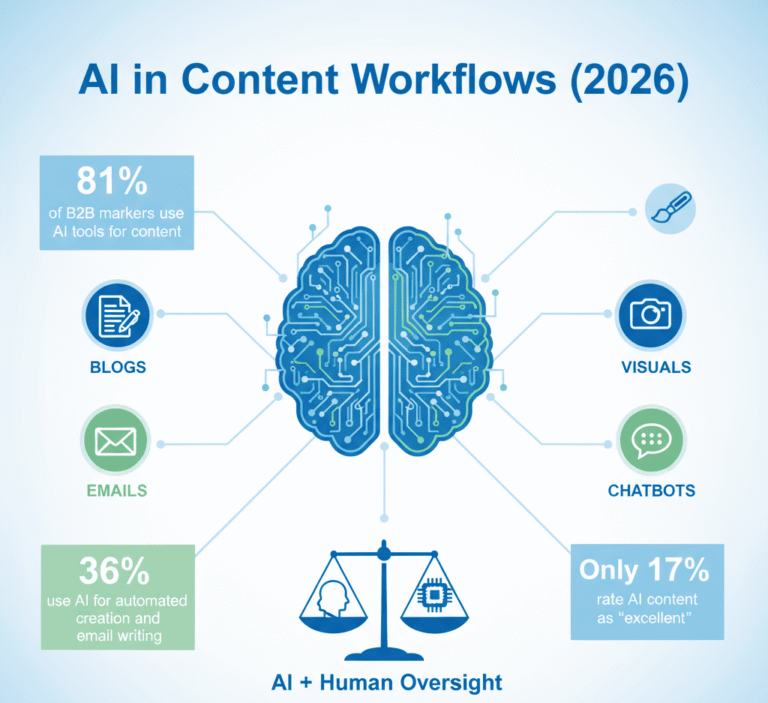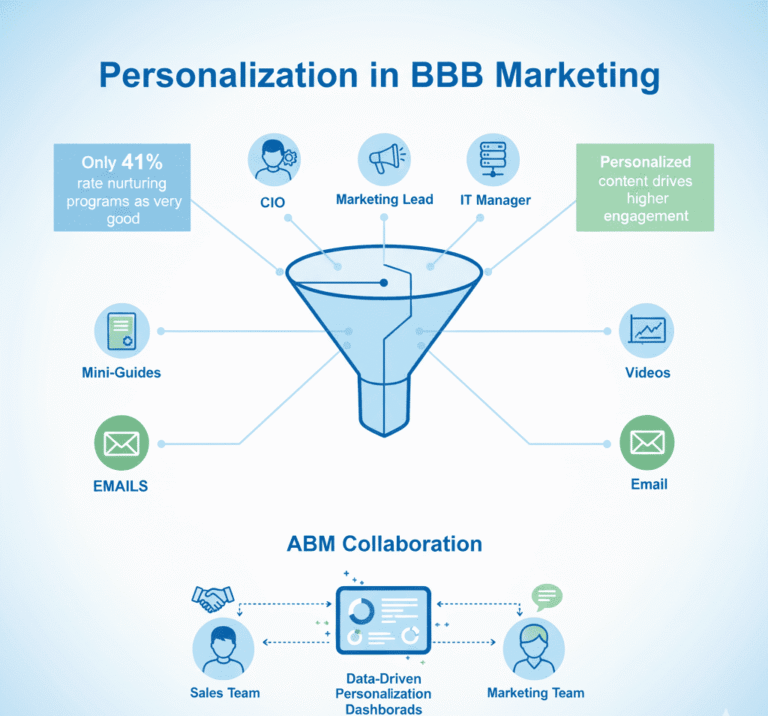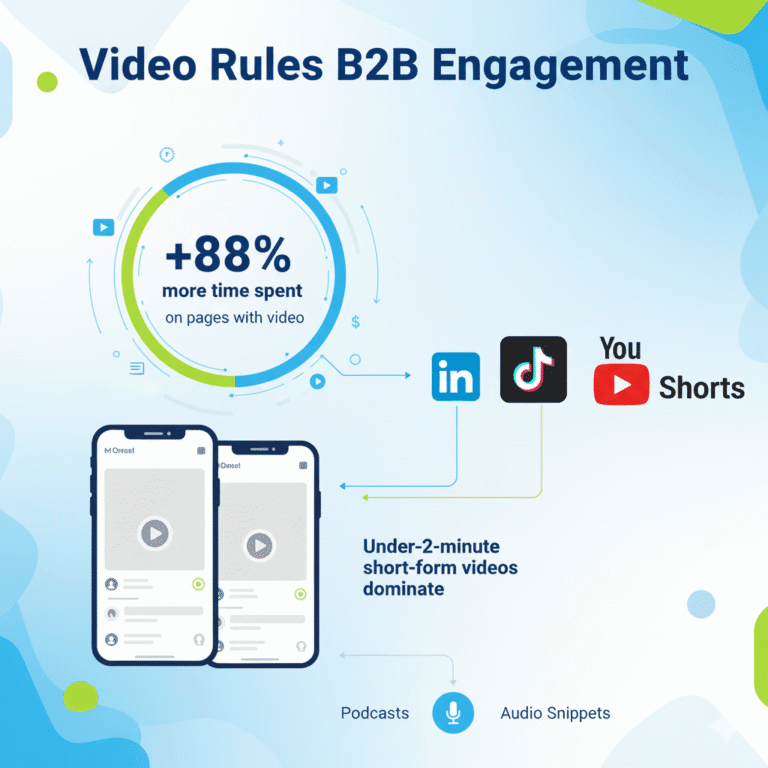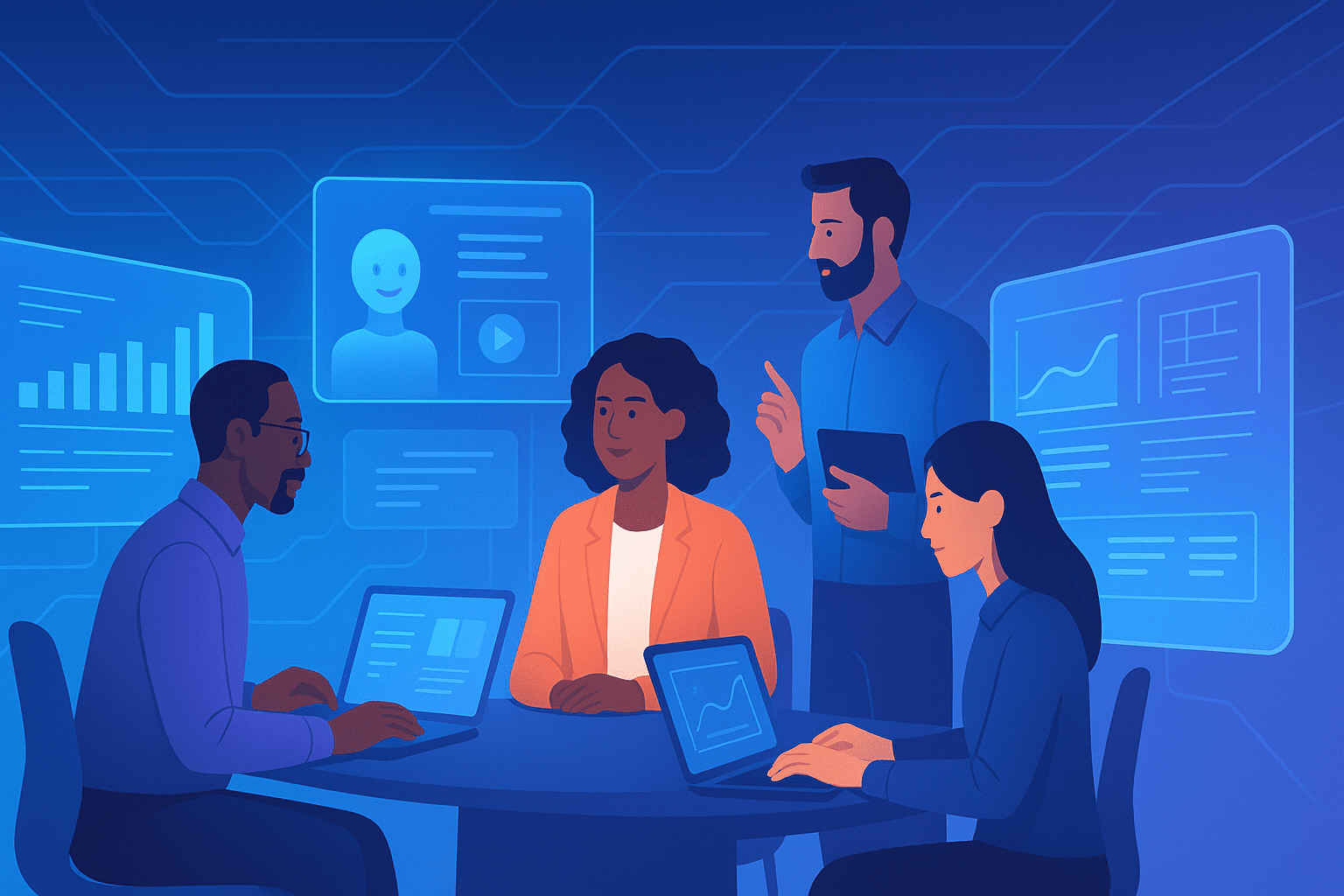In a landscape of tighter budgets and longer sales cycles, the stakes for B2B tech content have never been higher. Marketing leaders must adapt by embracing new formats and technologies. The key trends for 2026 include AI-driven content automation, hyper-personalization, booming video formats, immersive experiences, and changes in search optimization. The following explores each trend with supporting data and insights.
AI-Augmented Content Creation & Automation
Generative AI is now embedded in content workflows. Surveys find roughly 81% of B2B marketers are using AI tools for content, and common use cases include automated content creation and email writing (36% each). AI can draft blogs, social posts, visuals or chat answers at scale, freeing teams for higher-level work. However, marketers caution that generic “AI-slop” output often falls flat. In fact, only about 17% of marketers rate AI-generated content as “excellent”. The smart approach in 2026 will be augmented intelligence: use AI to accelerate copywriting and data handling, then apply human editors and brand voice to ensure quality. Many experts predict a shift toward authentic, influencer-driven content, for example, tapping subject-matter experts or employee advocates, to counteract bland AI drafts. Advanced AI agents (chatbots and assistants) will also handle routine inquiries and preliminary lead qualification, but creative oversight remains crucial.

Hyper-Personalization & Account-Based Content
Deep personalization continues to rise. Buyers expect content tailored to their industry, role, and stage. Yet many B2B firms struggle: only about 41% rate their nurturing programs as “very good”. High-performing teams use data and AI to bridge this gap: they build large libraries of modular content and dynamically customize it for specific personas or accounts. Personalization drives pipeline performance – teams that master it see far better engagement and conversions. In practice, this means delivering bite-sized, hyper-targeted assets (infographics, mini-guides, short videos) via the channels decision-makers use. As one report notes, brands are focusing on “smaller, targeted content via AI-driven personalization” on platforms like LinkedIn. Account-based marketing (ABM) will expand: Sales and marketing will collaborate to craft customized playbooks and content journeys for key accounts, using AI to activate the right message at each step. Overall, 2026 content strategies will hinge on smarter segmentation and seamless personalization at scale.

Video & Short-Form Engagement
Video continues to dominate B2B attention. Audiences spend far longer on pages with video (one study found 88% more time spent on video pages). The big trend is short-form, mobile-friendly video. Under-2-minute clips (vertical formats like Instagram Reels, TikTok, YouTube Shorts) are the new norm. WebFX reports that short videos on social platforms capture massive viewership and engagement. In 2026, tech brands are repackaging webinars, product demos and thought-leadership into brief, punchy clips and animations. Podcasts and audio snippets also grow as buyers multitask, but video rules engagement metrics. Key data show that quick video “snackables” dramatically boost recall and conversion. Marketers should integrate video into every channel – from LinkedIn posts to email – to meet buyers’ media habits.

Interactive & Immersive Content Experiences
Static, one-way content is giving way to interactive, immersive formats. Quizzes, polls, calculators, and gamified tools turn passive readers into active participants. For example, an AR (augmented reality) demo of a new gadget or a VR (virtual reality) product tour can captivate tech buyers far more than a PDF spec sheet. According to industry reports, interactive content (including AR/VR experiences) is “becoming mainstream” for B2B audiences. One analyst advises breaking through the noise by using “innovative, interactive content formats such as AR, VR…” to counter generic messaging. In practice, this means embedding interactive elements into websites and campaigns: 3D models viewers can rotate, calculators that estimate ROI of a solution, or live polls during webinars. Hybrids and virtual events will also leverage these formats (on-demand VR sessions, interactive breakout apps, etc.). In short, any tool that lets buyers engage, and even co-create, content will gain traction in 2026.
Evolving Search & Discoverability (AI Search and SEO)
The way B2B buyers search is shifting dramatically. AI assistants and chatbots are starting to replace traditional search queries. One forecast warns that by 2026 25% of organic traffic will bypass classic web search entirely, with users going straight to answer-driven engines. Today about 65% of Google queries already end without a click (the answer appears directly on the search page). In this environment, content must be optimized for answers, not just keywords. B2B teams are focusing on “Answer Engine Optimization” – structuring content to directly answer common questions and ranking in featured snippets or AI knowledge bases. That means clear, concise content sections, FAQs, and schema markup so that ChatGPT-like bots or voice assistants can surface your brand’s info. Technical SEO (fast pages, mobile optimization) remains table stakes, but copy teams will increasingly write in FAQ and step-by-step formats. In short, 2026 demands that marketers plan content for the era of zero-click and conversational search.

Conclusion
For B2B tech marketers and CXOs, the message is clear: blend technology with strategy. Use AI to automate and personalize, but keep a human, authentic touch in your storytelling. Invest in new formats (video, AR/VR, interactive tools) to meet audiences on their terms. And adapt SEO for an AI-driven landscape. The campaigns that succeed will be those that thoughtfully combine data-driven insights, creativity and consistency. By watching these trends and continuously testing, marketers can ensure their content stands out and drives results in 2026 and beyond.
From Sitefinity to Salesforce, Shopify to Magento, at Expericia we empower businesses to build smarter digital ecosystems that connect content, data, and customers effortlessly.
References:
- Content Marketing Institute — B2B Content Marketing Benchmarks, Budgets, and Trends: Outlook for 2025, 57 Content Marketing Statistics to Help You Succeed in 2025, Technology Content Marketing Benchmarks, Budgets, and Trends
- WebFX — 100 Powerful Video Marketing Statistics for 2025, Short-Form vs. Long-Form Video Content: Which Is Best?
- Taboola — 2025 Content Marketing Statistics: Key Data to Shape Your Strategy
- ArXiv (preprint) — LLM-Driven E-Commerce Marketing Content Optimization: Balancing Creativity and Conversion, Agentic Multimodal AI for Hyperpersonalized B2B and B2C Advertising
- YouTube — B2B Content Marketing Trends Marketers Need to Know (2025)




